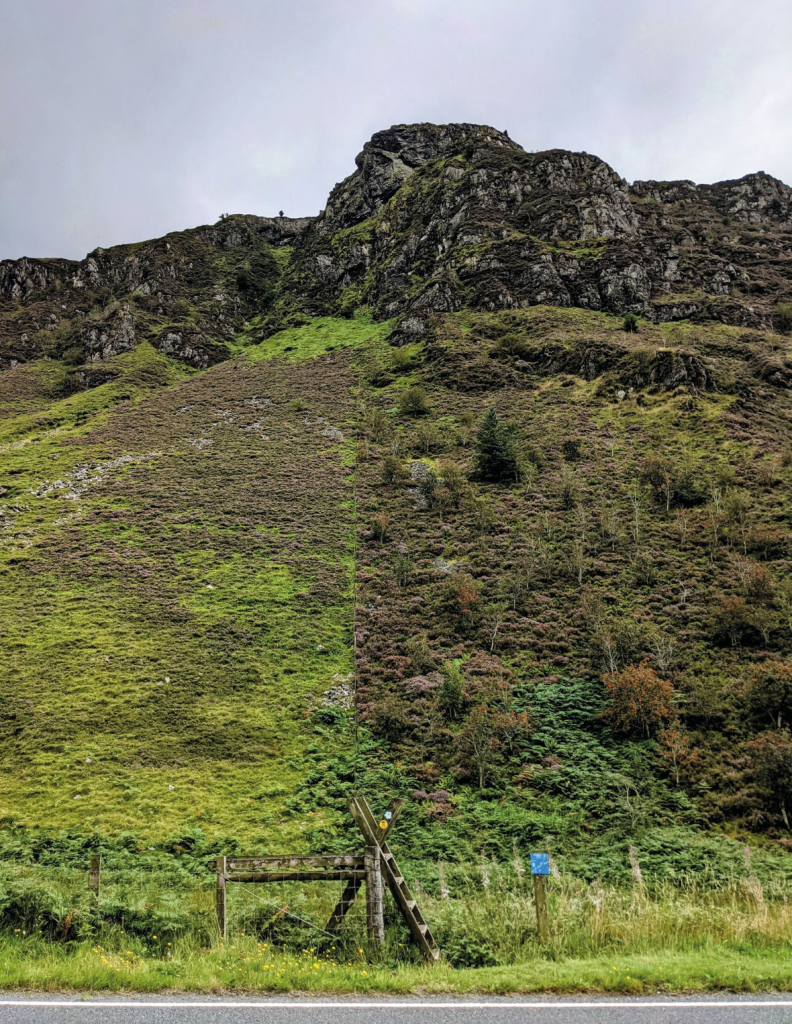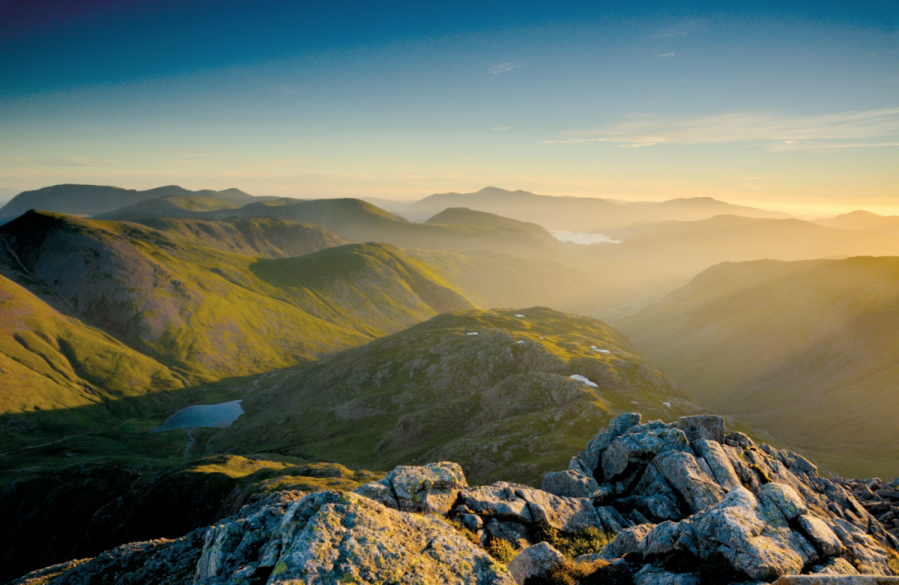Lack of ecological awareness means many of us are oblivious to how degraded our natural environment is. For Mary-Ann Ochota, solving that means starting close to home…
Our wild places are suffering because of our collective ignorance. We are, as a nation, ecologically illiterate.
Most of us can point to a rundown urban landscape and identify the flaws. But far fewer look at a rural scene and see industrial-scale exploitation, monocrop deserts and spot where the fertiliser runoff pours into the river. National treasures like the Lake District aren’t usually denounced as ravaged, denuded hills bitten to the quick.
Main image: The Lake District hills are a spectacular landscape, but unnaturally treeless. | Credit: Shutterstock
We hillwalkers are guilty too – we flick through these pages for inspiration and ideas, a route that might appeal for its beauty or challenge. We don’t – well, I don’t – usually stop to examine just how dreadfully unwell these glossy double-page landscapes are. They’re green, but in truth, that’s sometimes all that can be said for them.
Fellsides and glens aren’t supposed to be treeless – but unsustainable densities of sheep and deer nibble away all the young growth before it gets chance to establish. Upland turf isn’t supposed to be clumps of tough grasses, but a carpet of diverse plants supporting a web of insects, birds and mammals. Those multitudes of sheep and deer end up as ecosystem engineers – the only plant species that survive the onslaught are the less palatable ones.
The bare riverbanks you’ll clamber down as you walk coast to coast, or bothy to bothy should be tree-lined, which would shade the water, moderate flow, feed organic matter into the river system and create myriad habitats (If you haven’t already, check out Riverwoods: A Salmon’s Journey available free on Channel 5 on demand. The like-for-like visual comparison of our wild land compared to Canada at the same latitude is a jaw-dropper.)
And it’s not just ‘townies’ or kids who don’t know any better. Our politicians don’t, and plenty of folk in the countryside are content with business as usual. But change is urgently needed. So, what to do? I preach to you as the choir – we care about these wild places, and so this ecological illiteracy is our problem. And we face a challenge.
Find the wild
The first is aesthetic – healthy wild land doesn’t always look appealing. If you’re used to bare hills, trees can be an affront – they’ll block the view for starters. The ragged belt of bushes and dwarf trees – scrub – that ought to grow around the edges of woodland, blending from the open hillside – doesn’t offer an immediate wow factor. Nor do healthy wet bogs and mires.

A fenceline showing the impact of sheep – on the right side grazing has been reduced.
Credit: Jon Moses
The next challenge is that it’s hard for people to get upset about something they don’t even realise we’ve lost, and definitely don’t think has anything to do with them. Wild land ecosystems are hard to get to, with multiple barriers of time, access, cost and confidence. We need to work hard to dismantle many of those barriers. But we also need more people to care about healthy peat bogs and subarctic vegetation than may ever get a chance to visit them. A bit like caring about the Brazilian Rainforest because you know it’s important, not just because you go there on holiday. But then, the old saying is true – you care about what you know. So how do we square that circle, and help people get emotional about bogs, beetles and bushes they’ve never seen?
To harness public support to protect remote and unfamiliar landscapes, we need to bring people’s imaginations into play. And the way you do that is to give people a chance to care on a visceral, emotional level closer to home. So we start small, and find the wild nearby.
A sense of belonging
It begins with your kids poking sticks into the smelly, boggy bit in the local woods where the rainwater pools in winter. It’s a school group studying and protecting the scrubby bushes in the local park, or people returning to work learning hands-on land management skills like path repair.
Building a relationship with natural and wild places takes time. Understanding and joy flourishes with knowing a place regularly and intimately, and having a sense of belonging. Not ownership in a possessive way, but in a way that roots and celebrates your own place in the interconnection. One-off visits to ‘special’ places and gated nature reserves won’t cut it.
To really influence the future of the places that we TGO-ers love, the mountains that make us feel small, the wide moors where we breathe better, we need around 67.5 million versions of wild – one for every person in the population of the UK. If we want to influence policymakers and landowners, and develop a groundswell of public support and advocacy for wild places, we must start close to home.
Belonging, understanding and wonder are the magic ingredients. If you’re a member of a conservation organisation, tell them what you want – lobby them to fund work that enables people from all backgrounds to take their first steps towards caring for wild places and understanding the land.
Wherever your wild is, it all counts. It’s the only way the downy willow and mountain avens will seed, the riverwoods will grow and the peat bogs won’t dry and burn.
Mary-Ann is a broadcaster, anthropologist and keen hillwalker. She’s the hillwalking ambassador for the British Mountaineering Council and a fellow of the Royal Geographical Society. These are her personal opinions. Find her on Instagram and Twitter.







